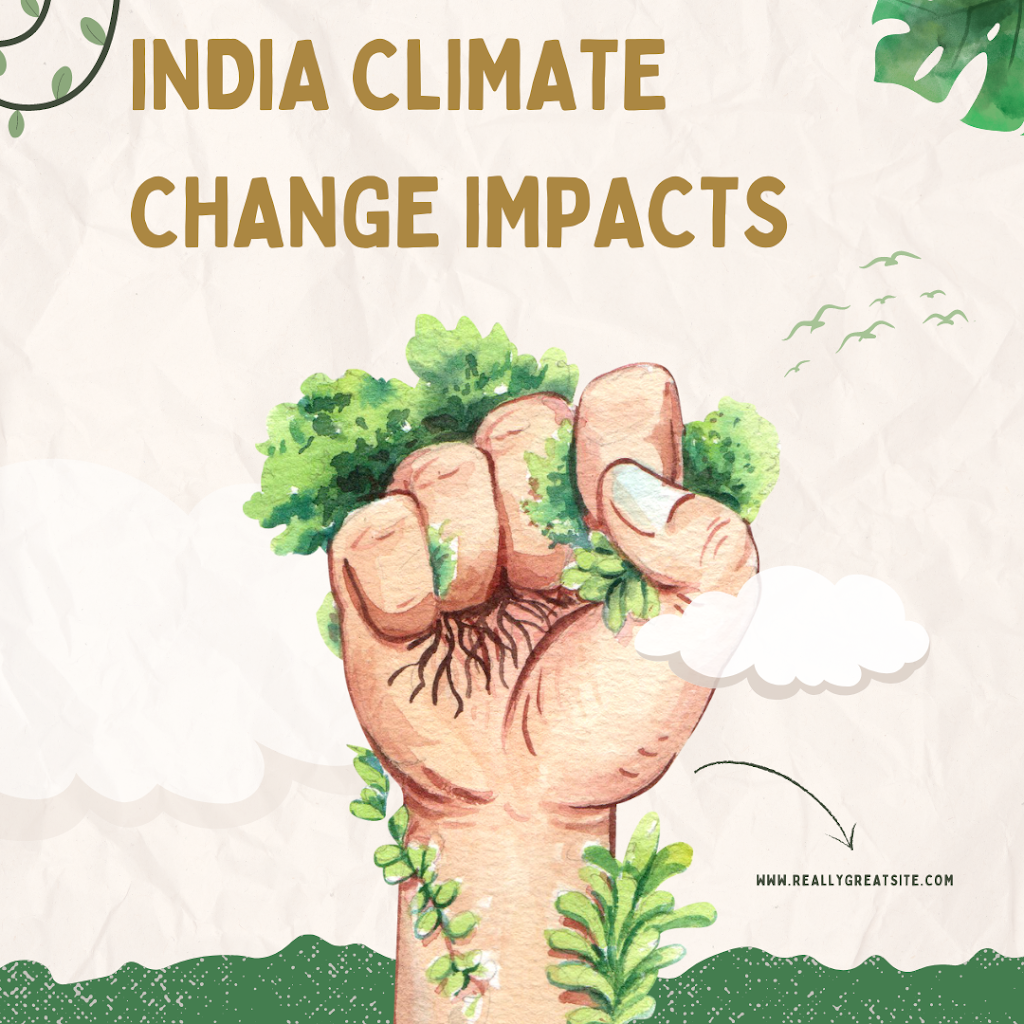
India climate change impacts The Himalayan peaks to the north and the ocean on three sides make the Indian subcontinent vulnerable to flooding, strong storms, sea level rise, and melting glaciers. Along with rising world average temperatures, it has also seen severe droughts and intense heat waves.
India climate change impacts and major causes Of India Climate Change
In the midst of oppressive heatwaves and erratic weather patterns made worse by climate change caused by humans, over 970 million Indians are casting ballots in the country’s general elections. These events have resulted in forced migration, increased hardship for millions of people, and loss of livelihood.
Anjal Prakash, author of multiple United Nations climate reports, highlighted the lack of attention given to climate change during the elections in India despite its significant impact on millions of lives. The Indian subcontinent, with its unique geographical features, is particularly vulnerable to sea level rise, severe storms, floods, and melting glaciers. The region has also been experiencing extreme heatwaves and droughts as global temperatures continue to rise. A report from the Centre for Science and Environment in New Delhi revealed that India faced extreme weather conditions on almost 90% of the days last year.
The effects of climate change are becoming increasingly evident, influencing voters across the country. In regions like western and central India, extreme heat and prolonged droughts are taking a toll on farmers like Vaibhav Maske. Despite his efforts to find water for his millet farm, Maske has been struggling due to the severe drought in Marathwada, Maharashtra. While the government has introduced schemes to support farmers, Maske believes that more needs to be done to address the core issues affecting agriculture. He emphasized the importance of providing a reliable water source for farming by constructing canals or utilizing water from nearby rivers. Maske urged authorities to prioritize these critical needs to ensure the sustainability of agriculture in the region.
Coastal regions in India are experiencing stronger and more frequent cyclones. The eastern coasts of the country have always been susceptible to cyclones, but the intensity and frequency of these storms have been on the rise. Last year, India witnessed its deadliest cyclone season in recent history, resulting in the loss of 523 lives and causing an estimated $2.5 billion in damages.
According to Roxy Mathew Koll, a climate scientist at the Indian Institute of Tropical Meteorology, their studies have revealed a threefold increase in floods since the 1950s and a 50% increase in cyclones since the 1980s.
The regions most impacted by natural disasters have become increasingly worried about this concerning pattern. In the Ennore locality of Chennai, approximately 25,000 individuals had intended to abstain from participating in the Indian general elections. This decision was influenced by the insufficient assistance provided by the government in the aftermath of Cyclone Michaung, which caused extensive damage along the eastern coasts of southern India in December 2023.
Unforeseeable and heightened flooding in Assam
A considerable proportion of the population in Assam state depend on fishing and the trade of agricultural commodities like rice, jute, and vegetables sourced from their modest farms situated on the floating river islands in the Brahmaputra River, which are referred to as Chars by the locals.
During floods, residents of Char islands often navigate makeshift rafts to reach dry land and return once the water recedes. However, floods have become more devastating and unpredictable due to climate change, according to locals. This has made it increasingly challenging to remain on the islands.
The melting glaciers and intense rainfall in the Himalayas
Sanjay Chauhan, an apple farmer in Shimla city, located in India’s mountainous Himachal Pradesh state, vividly remembers the deadly rainfall that occurred in the region last year. This rainfall claimed the lives of 428 people and broke local rainfall records.
Chauhan stated that he had never seen anything of this nature before. The torrential rain resulted in $5,000 worth of destruction to his orchards, while the total property damage throughout the state was estimated at $1.42 billion. He additionally mentioned that despite numerous concerns raised after the previous calamity, the government and political leaders are merely providing temporary relief.
The rising Global Warming temperatures result in increased evaporation of water, which is then discharged as heavy rainfall. Additionally, the fast melting glaciers in the region, which scientists predict could lose 80% of their volume by the end of the century, pose further risks to the Himalayan region and its inhabitants.
However, climate-related issues such as severe flooding and melting glaciers have not been addressed in the election campaigns within the state. Most political speeches in Himachal Pradesh have focused on matters related to corruption, price inflation, and unemployment, irrespective of party affiliations.
Meanwhile, Chauhan expressed concern, stating that locals are “apprehensive about what the monsoons will bring this year.”
Other regions, including the neighboring state of Uttarakhand, Delhi, and various northern and western Indian states, have also suffered significant losses in terms of lives, property, and farmland due to heavy rainfall.
Chauhan emphasized the need for “long-term strategies” to combat extreme weather events.
Residents like Subhashini Ravi, a 37-year-old from Ennore, expressed their frustration with politicians who only show up during elections to make promises but disappear afterward. However, the boycott was called off at the last minute after the regional government assured that the issues would be addressed post-election.
While religion, caste, and employment still dominate most Indians’ political preferences, Koll emphasized that climate is becoming a factor at the local level when an entire community is affected.
Authorities at both the local and federal levels have made some progress in adapting to the increasing frequency of cyclones by evacuating coastal residents in a timely manner, resulting in a significant reduction in loss of life. However, as cyclones become more intense, concerns about the future persist among residents like Ravi.






